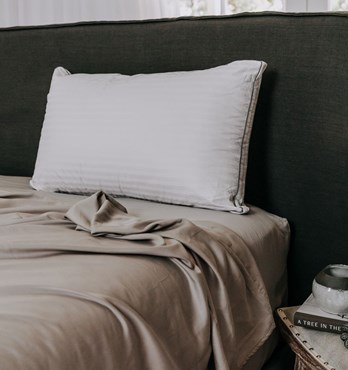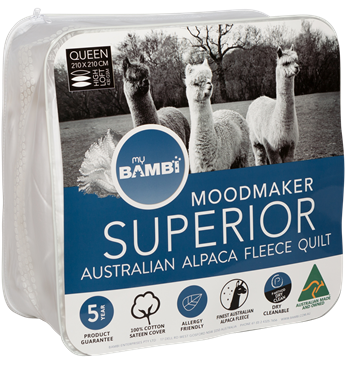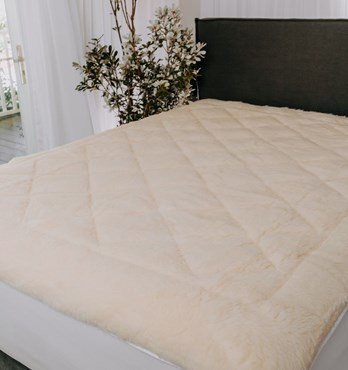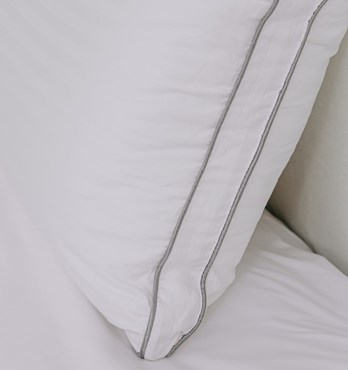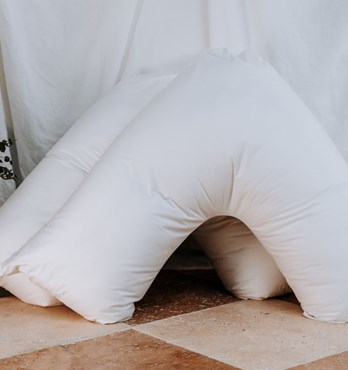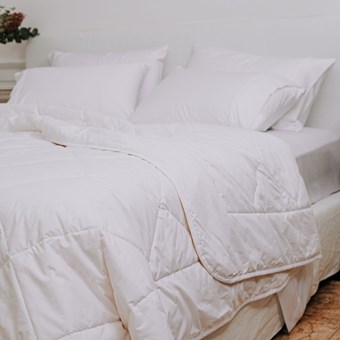Description
The Avoca Cotton Quilt is a lightweight quilt with a fill of pure, virgin quality, natural cotton. The quilt is perfect for the summer months and for hot sleepers. Proudly made in Australia, the Avoca Cotton Quilt has a cover of high quality Japara cotton.
FILL: Pure virgin quality cotton – 200 gsm weight
COVER: Pure high quality Japara cotton
SIZES: Single, Double, Queen, King, Super King
GUARANTEE: 5 years
CARE: Gentle machine wash / line dry
Benefits of Cotton:
COTTON is used commonly across the globe for bedding. It is a natural fibre that’s soft and strong, getting its strength from spinning the fibre into yarn and then weaving the yarn into fabric. It is soft, has good insulation properties and absorbs moisture reasonably well. In comparison with some other bedding fibres, cotton can be fairly inexpensive. However, it is important to note that the quality of cotton differs enormously. Variables in cotton production include the country of origin (Australian cotton for example is a much cleaner, better product than cotton grown in some other locations); the species and quality of the source cotton; the yarning technique and the finishing materials. The most common misconception with cotton is that the higher the thread count, the higher the quality.
Unfortunately thread count is not a measure of quality, and, believe it or not, thread count itself only contributes to 10% of a finished bedding product. Bambi’s cotton products are all made with pure, clean Australian cotton and are handcrafted with beautiful finishes.
UNDERSTANDING THREAD COUNT (AND WHY, UNFORTUNATELY, HIGHER ISN’T BETTER)
In recent years the term ‘thread-count’ has become synonymous with the process of buying bedding – in particular sheets, quilt covers, pillowcases etc. We’ve all been led to believe that the higher the thread count, the better the quality of the product. But is this really true – or is it a well executed marketing exercise?
What exactly is thread count? Put simply, thread count is the amount of threads woven together in a square inch. It is worked out by counting the lengthwise (warp) threads, and then the width-wise (weft) threads. Once counted, the amount of weft threads and warp threads are added together to form the thread count. (E.g. a fabric with 100 warp threads and 100 weft threads is said to have a thread count of 200).
How can thread count be misunderstood? There are two main reasons why thread count has become overused and misunderstood:
The first is that it is the quality of the fibre – the yarn size, the finishing and the construction – which really matters. An inferior fabric with a thread count of 800 is going to be of lesser quality than a superior fabric with a thread count of 300.
The second, and most important, reason is that some rather unscrupulous manufacturers use ‘creative maths’ to boost their thread counts. “Its is all about inflating the thread count to inflate the price tag,” according to Consumer Reports (an independent, not for profit organization). “If a product states that it has a 1,200 thread count, be very wary, since fitting 1,200 threads into a square inch is actually bordering on the impossible. In the spirit of free enterprise and competition, manufacturers battle to calculate their thread counts high, higher and highest. They count not just each thread, but each fibre (called plies) that make up each thread. So a single thread might be four plies twisted, or braided, together. One manufacturer will call that one thread, while another manufacturer will call it four threads”.
As proof of this, Consumer Reports hired an independent textile lab to count the threads in a $280 queen sheet set with a manufacturer-stated thread count of 1,200. The lab counted 416 threads per inch… just 35 percent of what was claimed.
Because thread count is a scientific term, and there are strict standards surrounding it, the US National Textile Association requested the US Federal Trade Commission become involved in the thread count issue. As a result of this, in 2008 a major US chain that operates in Australia was sued for mispresenting thread counts on their Egyptian sheet products.
Why can high-thread count sheets feel clammy? Another issue many people don’t realise is that the higher the thread count, the hotter or clammier the sheets will be on a warm summer’s night. The reason for this comes down to simple maths: if a sheet has a thread count of 500 (i.e. it has 500 threads per square inch) the threads are extremely close together and allow for almost no air to pass through the fabric, affecting the breathability of the product.
Breathability is recognised by sleep experts as one of the most important factors in getting a great nights sleep. If your bedding products allow air flow you get a much healthier, more restful night’s sleep.
What should I look for then? Experts agree that a thread count of between180-300 is best for bedding. However, the best advice we can give is to purchase linen by feel, not by thread pedigree. Bed linen should be soft, breathable, wrinkle free, easy-care and have good drape.
Where to buy
Direct From Manufacturer
Other Retailers
-
Domayne
-
Bedshed
-
Sleepzone
-
Snooze
AU
-
Beds R Us
AU
-
Harvey Norman
-
Forty Winks
Stockist
Visit WebsiteMajor Retailers
- Harvey Norman
- Forty Winks
- Domayne
* All products may not be available at all stores, countries and regions.
Social - Connect with us

Barcode
Contact information
Bambi Enterprises
Phone: (02) 4325 7656
Fax: (02) 4323 2964
Email us Visit our websiteBrochure
Download our brochure and find out more about our latest product offering, sales and promotions.
Download brochureOur partners
Proudly supporting Australian Made Campaign and the strength of the logo
